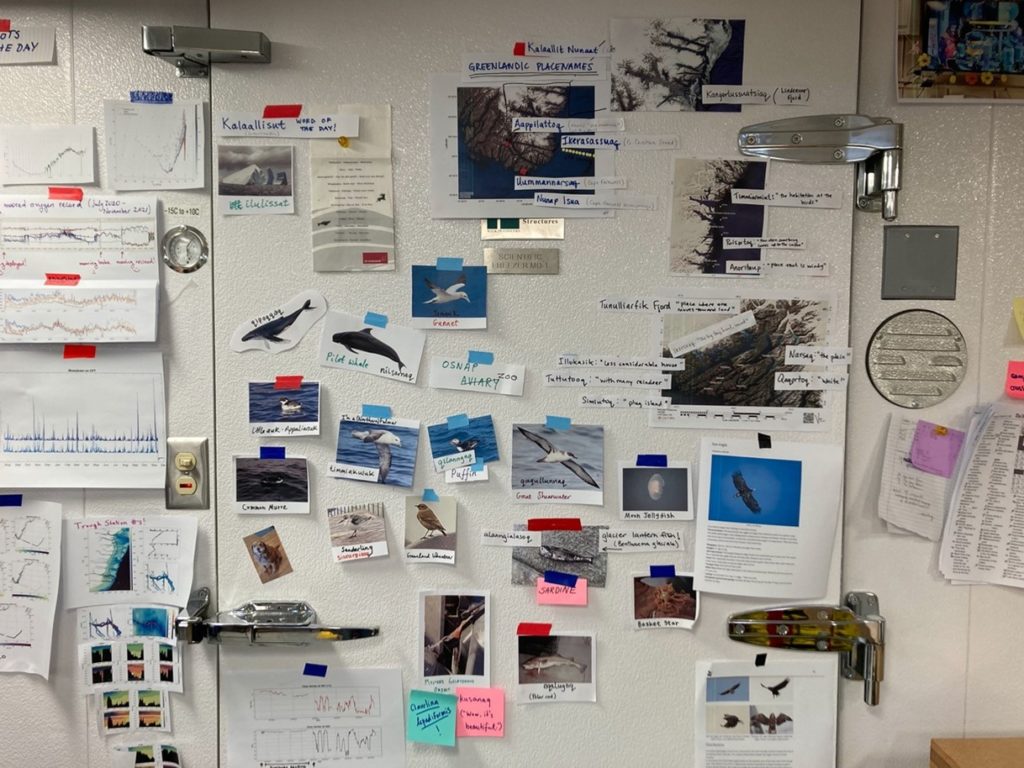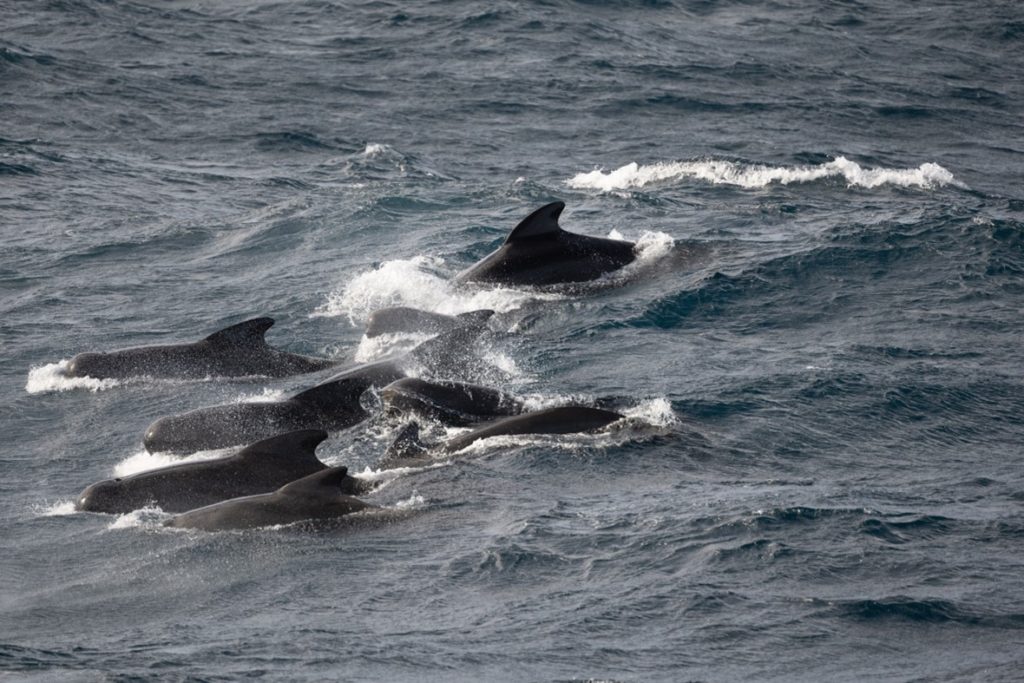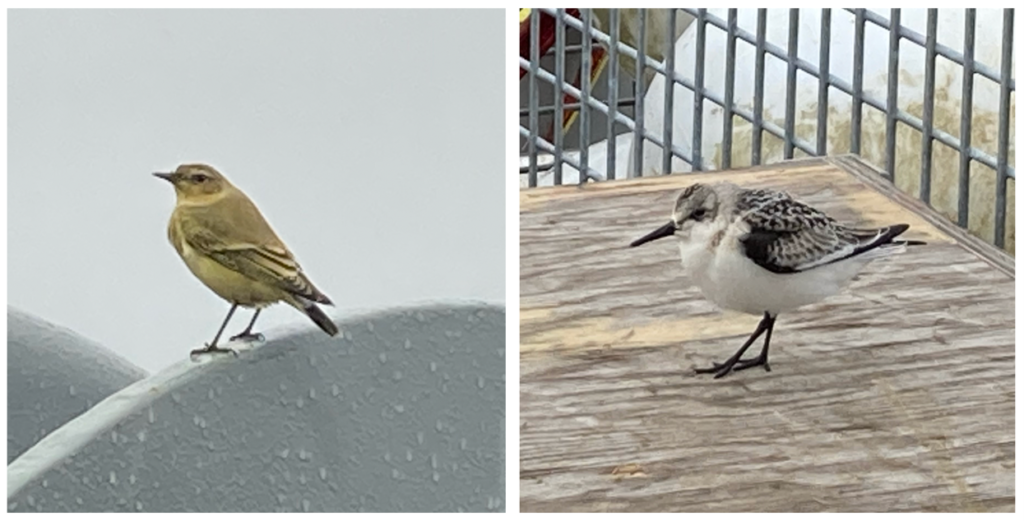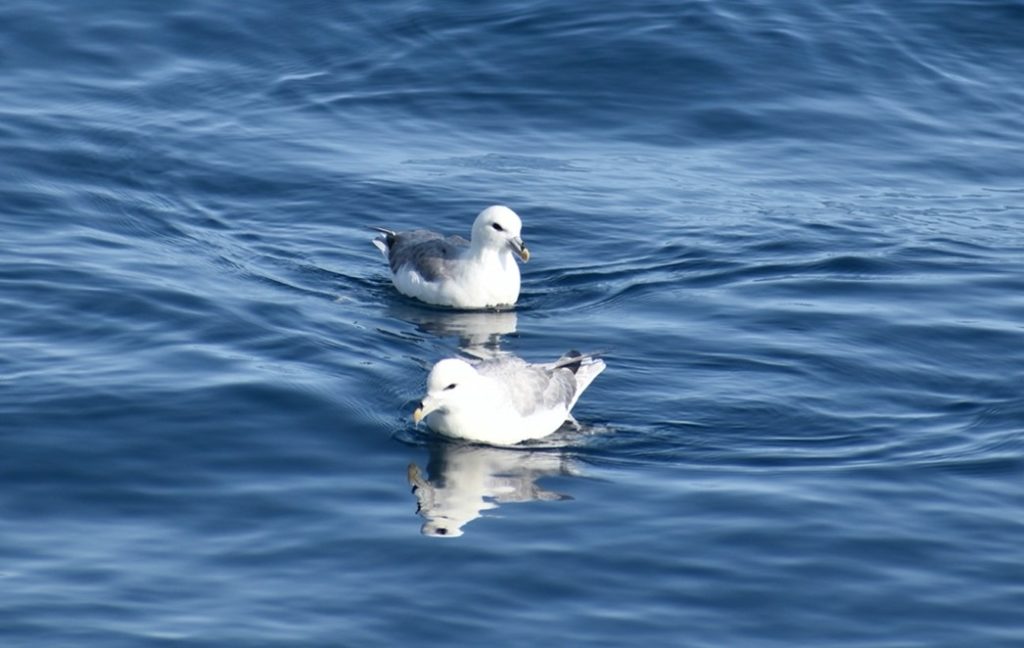By Donald Slater

The walk-in fridge in the main lab of the RV Neil Armstrong has for the past 5 weeks functioned as anything but a fridge. With storage space at a premium, it has hosted much of the moored instrumentation, including the microcats that measure ocean temperature and salinity, and the aquadopps that measure ocean velocity. The door has further become a pinboard for the birds, whales and mystery gelatinous objects encountered on our travels, collectively known as the OSNAP zoo. Before diving into the individuals that inhabit the OSNAP zoo, I’ll note that Aurora Roth has found Greenlandic names for many of the species and locations, which are noted in parentheses.
Starting with the birds, we do not count among us any ornithologists of great repute, so all identifications should be taken with a pinch of salt. Speaking personally, it is at the relatively tender age of 32 that I find myself at the top of the slippery slope that leads to spotting scopes, but I have been ably assisted by enthusiastic colleagues. We steamed out of Reykjavik on 19 August accompanied by bold gannets (timmik) and shy puffins (qilanngaq), the latter clumsily shooting under the water at the first sign of the boat. We picked up some great shearwater (qaqullunnaq) during our transit of the Irminger Sea, before proximity to southeast Greenland brought sightings of little auk (appaliarsuk) and common murre. While sheltering in the mouth of Tasermiut Fjord in southwest Greenland we were graced by a magnificent white-tailed eagle, and once further offshore, kittiwake.
What started out as an OSNAP aviary rather quickly became a zoo with the sighting of pilot whales (niisarnaq) on 22 August in the central Irminger Sea, where a huge pod appeared to be playing together in the waves for a number of hours. Pilot whales have been perhaps our most frequent sighting, but we’ve also glimpsed seals, orca, humpback and fin whales, most commonly on the east rather than west coast. The crew on the bridge of the boat are always the first to spot a whale, and often kindly radio down to the science lab where there is then a scrambling for jackets and binoculars.

Some creatures have been brought out of the ocean against their will. While in Ikerasassuaq (Prince Christian Sound) one of the crew caught some Atlantic cod that constituted dinner that evening. A great variety of life has emerged from the ocean on our recovered moorings, including basket stars and many hard to identify gelatinous creatures, some apparently found to be clavelina lepadiformis. We’ve also had some smaller birds temporarily increase the number of boat inhabitants beyond 39 humans. In late August, during a storm with winds of 50 mph and waves over 4 m, a small group of Greenland wheatear found refuge on the bow of the Armstrong, but sadly perished a few days later. In early September, while over 70 miles offshore in the Labrador Sea, we were visited by a sanderling (siorarsiooq), who surveyed the boat for a few hours before deciding it preferred its own company.

Our most constant companions, however, have been fulmars. Since leaving Reykjavik harbour to the time of writing near Cape Desolation, there has not been a moment without fulmars in view, so that it would be easy to believe the same fulmars have followed us every step of the way. Fulmars constitute the first chapter of The Seabird’s Cry by Adam Nicolson, a book that Fiamma will recommend to anyone who will listen, and which describes fulmars as “wind-runners, wind-dancers, the wind-spirits, alive with an evolved ability to live with the wind, in it and on it.” This has certainly been our impression from the boat – the fulmars coming into their own on particularly windy days, when they like to glide from the stern to the bow within touching distance of the boat, then wheel away with dramatic acceleration out into the ocean before looping around behind us to repeat the acrobatics.

Within a few days we’ll arrive in Nuuk and touch our first land for 36 days. This brings mixed feelings from relief at the freedom of leaving the boat to the sadness of the end of a unique experience. The walk-in fridge in the main lab of the RV Neil Armstrong, having temporarily hosted a thriving ecosystem, will go back to being a walk-in fridge.
[Greenlandic animal names may be found at https://oqaasileriffik.gl/en/terms-of-greenlandic-animals/]